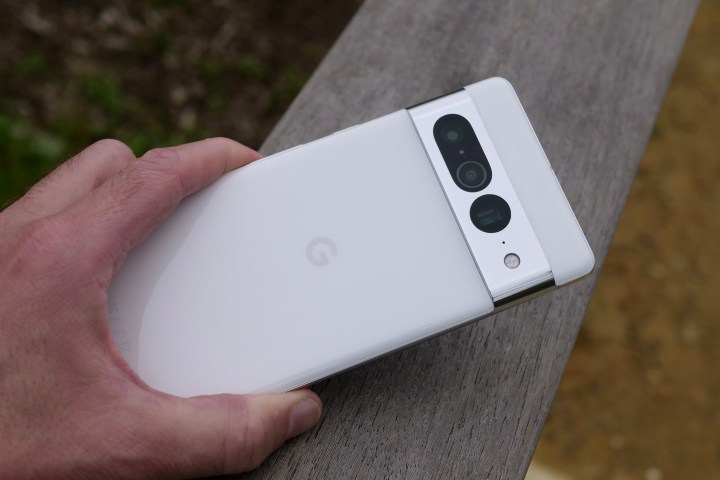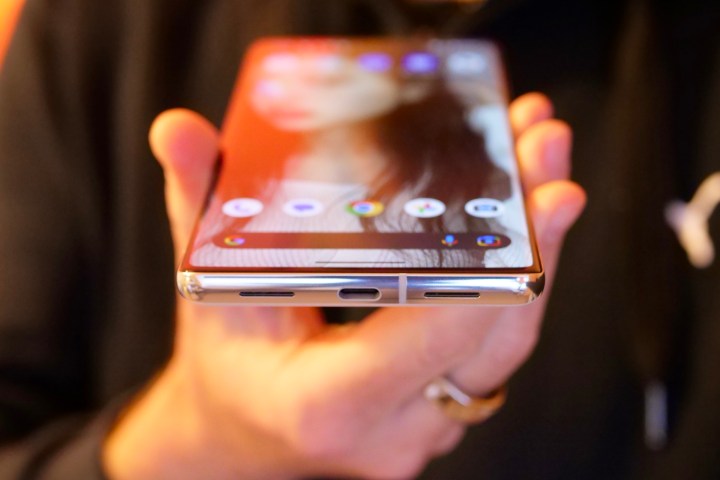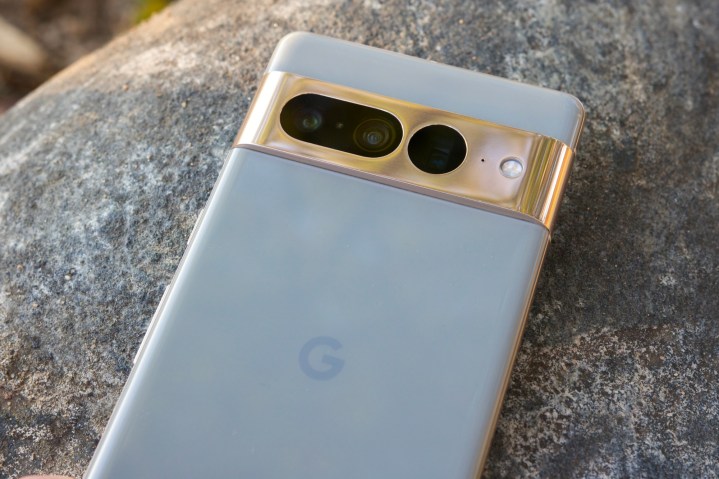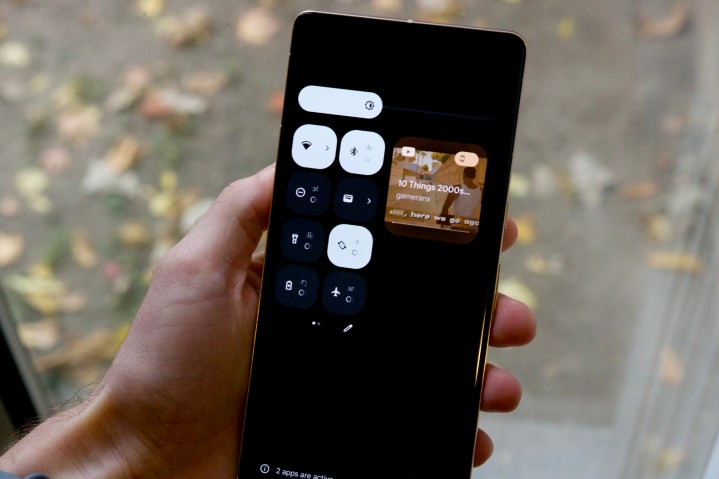Over the years, Google has kept us yearning for a true iPhone contender. And it finally comes true with the Google Pixel 9 Pro, which brings a host of compelling changes over the last year’s Pixel 8 Pro. The gap further widens when we compare it to the Pixel 7 Pro.
The Pixel 9 Pro appears better than the Pixel 7 Pro in almost every regard. Does that mean you should upgrade to the new phones — plural since it now comes in two sizes? That’s exactly what we will answer in this article.
Before we do that, here’s a quick gist of what the new Pixel 9 Pro and the Pixel 9 Pro XL bring to the table when compared to the Pixel 7 Pro.
Google Pixel 9 Pro vs. Pixel 7 Pro: specs
| Specs | Google Pixel 9 Pro/Pro XL | Google Pixel 7 Pro |
|---|---|---|
| Size | Pixel 9 Pro: 152.8 x 72.0 x 8.5 mm (6.0 x 2.8 x 0.3 inches)
Pixel 9 Pro XL: 162.8 x 76.6 x 8.5 mm (6.4 x 3.0 x 0.3 inches) |
162.9 x 76.6 x 8.9 mm (6.4 x 3.0 x 0.35 inches) |
| Weight | Pixel 9 Pro: 199 grams (7.01 ounces)
Pixel 9 Pro XL: 221 grams (7.8 ounces) |
212 grams (7.48 ounces) |
| Screen | Pixel 9 Pro:
6.3-inch Super Actua LTPO Pixel 9 Pro XL: 6.8-inch Super Actua LTPO |
6.7-inch Super Actua LTPO 1440 x 3120 pixels 1-120Hz Dynamic refresh rate HDR10+ 1,500 nits peak brightness |
| Operating system | Android 14 | Upgradeable to Android 14 |
| RAM & Storage | 16GB + 128GB
16GB + 256GB 16GB + 512GB 16GB + 1TB |
12GB + 128GB
12GB + 256GB 12GB + 512GB |
| Processor | Google Tensor G4 | Google Tensor G2 |
| Camera | Triple rear cameras:
50MP primary, f/1.68 aperture, 1/1.31-inch sensor size, OIS 48MP ultrawide, f/1.7, 123° field of view 48MP telephoto, f/2.8, 5x optical zoom, 1/2.55-inch sensor Selfie camera: 42MP selfie camera, autofocus, 123° field of view |
Triple rear cameras:
50MP primary, f/1.85 aperture, 1/1.31-inch sensor size, OIS 12MP ultrawide, f/2.2, 126° field of view 48MP telephoto, f/3.5, 5x optical zoom, 1/2.55-inch sensor Selfie camera: 10.8MP selfie camera, autofocus, 93° field of view |
| Video | Rear: Up to 8K@30fps or 4K@60fps
Front: Up to 4K@60fps |
Rear: Up to 4K@60fps
Front: Up to 4K@60fps |
| Connectivity | Bluetooth 5.3 5G Wi-Fi 7, tri-band UWB NFC |
Bluetooth 5.2 5G Wi-Fi 7, tri-band UWB NFC |
| Ports | USB-C (USB 3.2) | USB-C (USB 3.2) |
| Water resistance | IP68 | IP68 |
| Battery & charging | Pixel 9 Pro:
4,700mAh Pixel 9 Pro XL: 5,060mAh |
5,000mAh 23W wired charging 23W wireless charging Reverse wireless charging |
| Colors | Obsidian black, Porcelain white, Hazel green, Rose Quartz pink | Obsidian black, Snow white, Hazel green |
| Price | Pixel 9 Pro: Starting at $999
Pixel 9 Pro XL: Starting at $1,099 |
Started at $899 at launch |
Google Pixel 9 Pro vs. Pixel 7 Pro: design

The entire Pixel 9 series brings major design changes over the previous generations. Foremost, it’s important to point out that the Pixel 9 series is slightly more diverse than earlier models; the Pixel 9 Pro comes with in two sizes — one with a 6.3-inch display and an XL with a 6.8-inch display. For sake of simplicity, we will refer to both as the Pixel 9 Pro unless there are specific differences to highlight.
As stated in our Pixel 9 Pro XL review, the new phones bring a complete design overhaul, and feel like a massive upgrade. The newer design comprises rounder elements, a flat mid-frame, and uniform colors on the sections of metal and glass.

The Pixel 7 Pro felt equally enticing at the time of its launch. The interplay of dual tones, especially with the golden accents on the Hazel green back, seem charming. However, as with everything, fading novelty can create a gap for more modern designs, and the Pixel 9 Pro fits right in.
While Google goes for rounder corners than the Pixel 7 Pro, the curved edges on the back and the screen have been replaced, following other premium phones such as the Galaxy S24 and the iPhone 15 Pro Max. How that affects usability may be subjective, but the Pixel 9 Pro looks fresher as a result.
The finish of the design is as top-notch as it was back then, so we wouldn’t really stress much about it. A bonus point goes to the Pixel 9 Pro for using the newer Corning’s Gorilla Glass Victus 2. There are no cutbacks in durability, and all the new Pixel phones retain IP68 certification for protection against dust and water.

The newer Pixel 9 Pro gets a lighter, more ergonomic footprint if you want the same features in a smaller size. Meanwhile, the Pixel 9 Pro XL offers some benefits, including a larger display as big as the Pixel 7 Pro’s. If a bigger display is your priority, the next section details all the ways it has changed since the Pixel 7 Pro.
Google Pixel 9 Pro vs. Pixel 7 Pro: display

The Pixel 9 Pro series gets two options for display sizes — a smaller 6.3-inch display on the Pro and a larger 6.8-inch display on the Pixel 9 Pro XL. The former is similar to the standard Pixel 9, while the latter is identical to the Pro variants in previous generations of Pixel phones.
That means if you have the Pixel 7 Pro and are looking to upgrade to a similarly large-sized phone, the Pixel 9 Pro XL makes more sense. The smaller Pixel 9 Pro is ideal if you want the same features but in a lighter and more compact form. However, outside of the display sizes, the Pixel 9 Pro and the XL have the same features , so your decision can be based entirely on size.
As for other differences with the Pixel 7 Pro, the Pixel 9 Pro has a significantly brighter display that now goes up to 3,000 nits in peak brightness mode — compared to the 2,000 nits on the Pixel 7 Pro. The Pixel 7 Pro’s display already had a respectable number of details and vivid colors, and the Pixel 9 Pro’s Super Actua display doesn’t let us down in that regard. It’s still as outstanding as it was before.

While both sizes support different resolutions on the display, you can reduce it to 1080p, saving battery. You get LTPO tech underneath that allows for variable refresh rates, ranging between 1Hz and 120Hz. This, again, is implemented to ensure that faster refreshing doesn’t suck out the battery when it’s not needed to.
Physically, Google has ditched the curved edges along the display as it has on the back of the Pixel 9 Pro. It has also replaced the iffy optical fingerprint scanner with an ultrasonic one, which is faster and much more accurate. You will need to choose the screen protectors for your Pixel 9 Pro more carefully to ensure the fingerprint scanner works properly.
Google Pixel 9 Pro vs. Pixel 7 Pro: performance

Google has armed the Pixel 9 Pro with a new Tensor G4 chip — a definite upgrade over the Pixel 7 Pro’s Tensor G2. Structural improvements over the G2 make the Tensor G4 thermally more efficient and, therefore, less prone to throttling issues. While there isn’t a massive performance boost over last year’s Tensor G3, the jump from G2 to G4 will be felt immediately. The GPU onboard is also more efficient.
One thing that remains constant is the fact that Google is still using Samsung’s flagship Exynos chips as reference instead of designing its own chips. Google’s own addition comes in the form of the neural processing unit, which should elevate the experience while running AI-related tasks. Once again, the Pixel 9 Pro is probably not the most ideal gaming phone, and you should look elsewhere if you enjoy hardcore mobile gaming. However, it should more than suffice for less resource-intensive games.

Google has also upgraded the RAM on the Pixel 9 Pro, upping it from 12GB previously to 16GB. The presence of extra RAM allows you to keep more apps open in the background. Notably, Google reserves roughly three gigs of the 16 for superfast AI processing. So, in essence, you are only getting an additional gigabyte of RAM. Irrespective, the change is welcome and should help the phone stay afloat over the next several years that Google promises to keep it up to date.
On the Pixel 9 Pro, Google adds a 1TB storage option in addition to the existing 128GB, 256GB, and 512GB alternatives, all of which have the same RAM.
The Pixel 9 Pro’s more efficient chip, more RAM, and hardware allocated for AI will definitely offer a better performance than the Pixel 7 Pro.
Google Pixel 9 Pro vs. Pixel 7 Pro: battery and charging

The Pixel 7 Pro offered a decent one-day battery backup back when it launched, and not much has changed over the years. If anything, we expect the Pixel 9 Pro phones to last longer because of the more efficient Tensor G4 chip inside. There are, however, a few caveats to note.
The two Pixel 9 Pro variants differ is in terms of their battery capacities and charging speeds. The smaller Pixel 9 Pro comes with a 4,700mAh battery while the bigger one comes with a 5,060mAh cell. The latter is identical to the battery capacity on the Pixel 7 Pro.
Simultaneously, both Pixel 9 Pro phones come with faster charging than on the 7 Pro. The smaller one gets 27W wired and 21W wireless charging. On the other hand, the larger one charges much faster at 37W through a wired connection and 27W wirelessly.

Notably, you would need a 40W charger for the Pixel 9 Pro. The same won’t make the cut for the XL, and you would need to buy a brick with at least 45W output. The fast wireless charging speeds can only be achieved using second-gen Pixel Stand.
Although Google promises 24-hour battery lives with both new phones, we managed to get longer backup during our respective reviews. So, that’s another way the Pixel 9 Pro outweighs the 7 Pro.
Google Pixel 9 Pro vs. Pixel 7 Pro: cameras

Pixel phones derive their names from the camera, and have consistently impressed in this regard despite other deficits. The Pixel 7 Pro was able to capture incredible photos with all three cameras, and the Pixel 9 Pro only improves upon them.
The Pixel 9 Pro gets an upgraded camera system, both on hardware and software levels. Though the primary 50-megapixel camera continues to use the same sensor inside, the lens has been upgraded with a faster aperture. The same goes for the 5x periscope telephoto, which also gets a wider aperture lens. Meanwhile, the ultrawide has been upgraded from 12MP to 48MP. So has the selfie camera, which now features a 42MP sensor in place of the 10.8MP earlier. All of these cameras, including the one on the front, come with autofocus capabilities.

The cameras on the Pixel 9 Pro indisputably have an edge in terms of specifications. But in real life, the margin may not be far long. Reasons to buy the Pixel 9 Pro are instead backed by AI features that enhance photos you take with it. For instance, the Auto Frame feature will automatically position subjects in the center of frame using AI to generate some parts of the image. The fanciest of them all is Add Me, which seamlessly adds people missing from photos, resulting in unbelievably real-looking results.
Google Pixel 9 Pro vs. Pixel 7 Pro: software and updates

Pixels are considered the prime torchbearers of the Android experience, bringing the latest features before any other manufacturer (with exceptions for Samsung, in some cases). At the time of its launch, the Pixel 7 Pro was the first phone to run Android 13, but the experience was marred by a barrage of weird, unexplainable bugs, so much so that Digital Trends Mobile Editor Joe Maring called it one of the “buggiest and glitchiest smartphone” ever. Surprisingly, some of our team members faced these issues while others didn’t.
Several months later, Digital Trends’ Mark Jansen still couldn’t get rid of the bugs entirely, which made him wish he never bought the Pixel 7 Pro. The bugs continued to plague some units even after the Android 14 update last year.
In comparison, the Pixel 9 Pro comes with a relatively stable user experience, and we haven’t encountered any bugs so far. Interestingly, Google packaged it with last year’s Android 14 instead of Android 15, which won’t be available until October.
Despite that, the Pixel 9 Pro comes with a host of AI features backed by Google’s Gemini. This includes Pixel Screenshots, which stores context about screenshots and helps find them more quickly, a new Pixel Weather app, and other useful features such as Hold for Me for waiting on calls. Google also bundles a Pixel Studio app that uses AI to generate images, but the results in our case were unfiltered and quite concerning. Other than this, the Pixel 9 Pro performs flawlessly.

More importantly, the Pixel 9 Pro gets seven years of promised Android updates while the Pixel 7 Pro only gets three — Android 16 being its last. So, if you are looking to retain the phone for longer, the Pixel 9 Pro makes much more sense.
Google Pixel 9 Pro vs. Pixel 7 Pro: price and availability

The Pixel 7 Pro began at $899 at the time of its launch. While it has been officially delisted from Google’s online store, you may still be able to buy some leftovers on Amazon or Walmart. Though we wouldn’t recommend doing that — the Pixel 8 Pro is a much better option if you want to buy an older Pixel for cheaper.
Meanwhile, all the extra goodness on the Pixel 9 Pro comes at an additional cost. The smaller one starts at $999 while the Pixel 9 Pro XL is available at a starting price of $1,099. The phones are already available for sale, and you can get handsome trade-in benefits by exchanging your older Pixel. For instance, the Pixel 7 Pro with a 128GB storage brings in up to $540 of benefits presently.
Google Pixel 9 Pro vs. Pixel 7 Pro: verdict

The Pixel 9 Pro brings a plethora of new upgrades, especially in comparison to the Pixel 7 Pro. This includes a better display, faster charging, more stable performance, and slightly better cameras. That does not necessarily mean you should chuck your old phone away, especially if it’s working fine. This is also true if you bought the Pixel 7 Pro solely for its cameras, which are still aging well.
However, if you have been yearning for a longer software update, a more striking design, and slightly better battery, upgrading to the Pixel 9 Pro is a no-brainer. Moreover, if you have been grappling with software issues or the slower fingerprint scanner on the Pixel 7 Pro, the upgrade makes even more sense. Trade-in benefits upward of $500 should easily tempt you into making the plunge.



